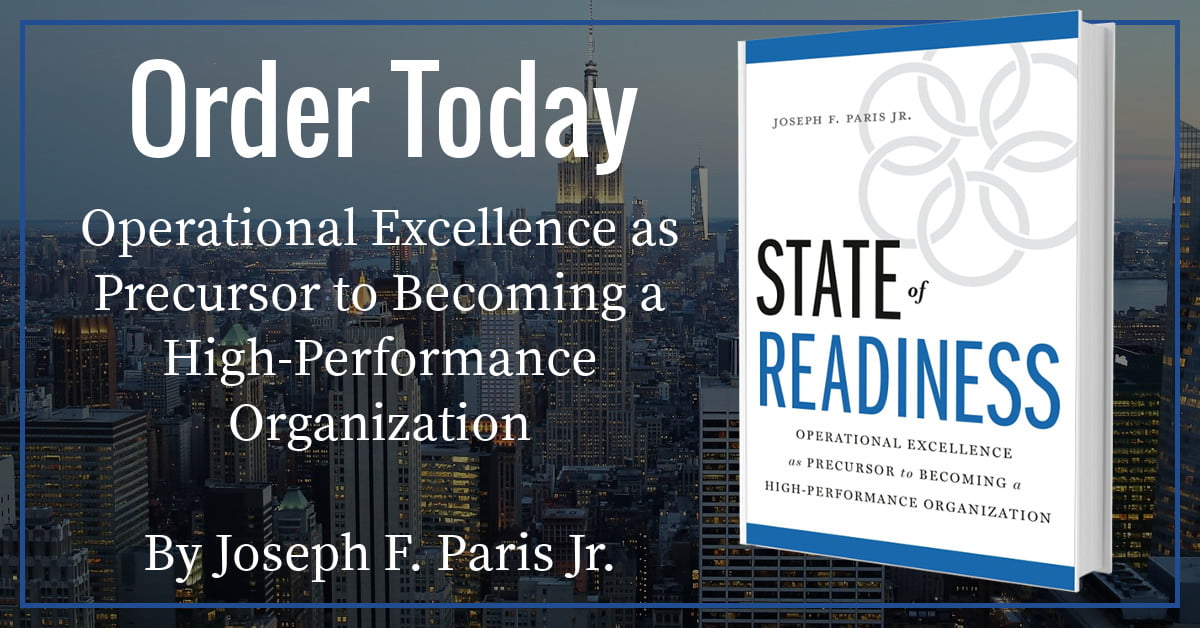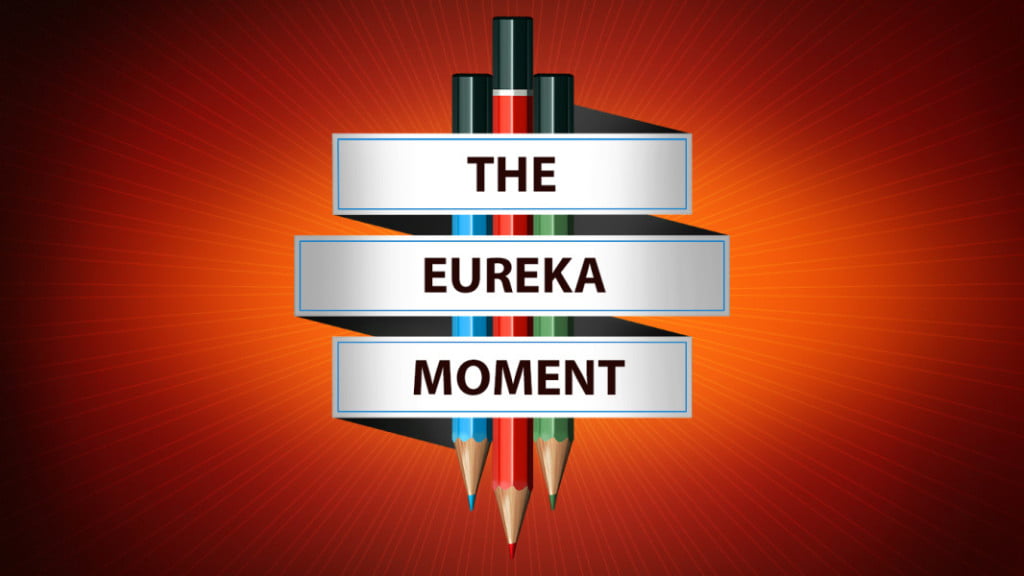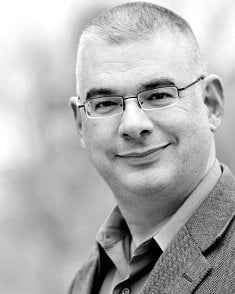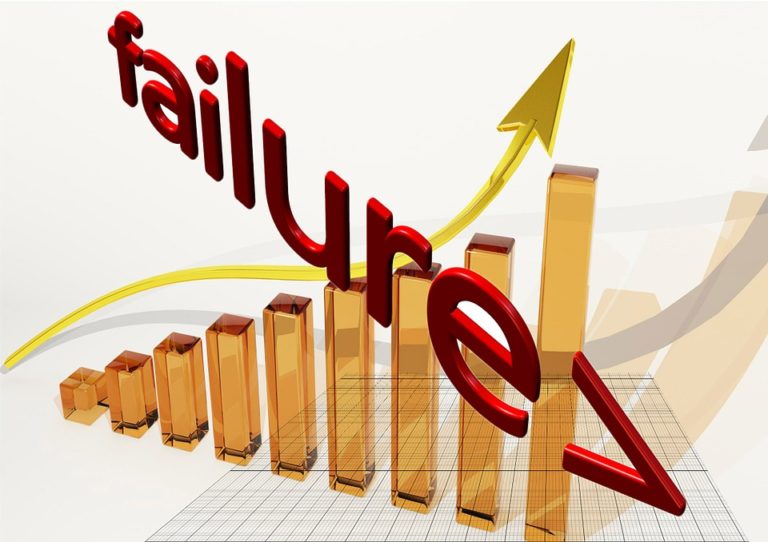The Eureka Moment
“First comes thought; then organization of that thought into ideas and plans; then transformation of those plans into reality. The beginning, as you will observe, is in your imagination.”
Napoleon Hill
Almost all of us have experienced a “ Eureka Moment ” – a moment in our lives where we have had a great thought or idea. Our endorphins are activated. We feel exhilaration and are filled with energy.
Sometimes, the Eureka Moment just hits us. We might just be quietly sitting alone when the thought just pops into our heads. Just think of Archimedes and the idea that came to him like a thunderbolt whilst stepping into a tub and realizing the volume of water being displaced must equal to the volume of his body that was submerged – and thus exclaiming “Eureka!” and leading to the discovery of density.
Other times, the Eureka Moment might be the result of observing a relationship or interaction between objects or ideas. The development of Penicillin is a perfect example of such a discovery by observation when, in 1928, Alexander Fleming found that a bacterial mold had contaminated one of his experiments. Had Fleming decided to discard the contaminated dish instead of delving further, who could speculate when – or even if – Penicillin would have been discovered?

But most often, the Eureka Moment is the result of steadfastly analyzing a problem until we develop a solution. Think of the years Thomas Edison toiled in his laboratory working on the countless ideas that came to his prolific mind. He went about his work methodically – once responding to a person who questioned his cheer when an experiment went awry, “The experiment did not fail. I simply discovered another way that will not work.”
And since most Eureka Moments are the result of hard work – over the years, people have devoted a lot of time and energy developing tools and standards to make the process more predictable. There are methods such as those contained in “Blue Ocean Strategy” and Design for Six-Sigma (DFSS) which attempt to give structure to invention. But sometimes, the process becomes more about using the tools than actually delivering the results.
Sometimes, we have to stay focused on the basics of strategy execution…
Strategy
“What business strategy is all about; what distinguishes it from all other kinds of business planning – is, in a word, competitive advantage. Without competitors there would be no need for strategy, for the sole purpose of strategic planning is to enable the company to gain, as effectively as possible, a sustainable edge over its competitors.”
Kenichi Ohnae
The very first step in any initiative is to define as completely as you can what you want to accomplish – what are the goals. Every sport has a means of calculating success, or levels of success. Football has the aptly-called goal-line. Golf counts strokes. Even synchronized swimming has a somewhat subjective manner of obtaining a score.
The question is, “If you reach your goals, how do you know?”
To be successful, you have to first clearly define what that success will look like when achieved. You have to be able to effectively communicate your goals to others so that the team can support you and can work towards the achievement of the goals.
If you cannot get others to understand your goals, you have not defined them well enough. Go back and do a better job.
Tactics
“In preparing for battle I have always found that plans are useless, but planning is indispensable.”
Dwight D. Eisenhower
After you have defined your strategy, you need to develop the plans that will serve as guidance for their pursuit.
How will you achieve your goals? Do you work backwards from the goal to where you are? Or do you work from where you are and plan forward?
It is not important to have precisely engineered the perfect plan. In fact, such a plan does not exist.
A simple example, which anyone who has ever golfed will understand, is the tee-shot. When you tee-up the ball, club in hand – you have the perfect plan in your mind for how you are going to play the hole. You are going to hit your tee-shot to the 150 yard marker, then you are going to hit your 150 yard club to the green, and finish with a two-putt for par – the perfect plan – simple and elegant.
But we all know that the plan evaporates on your back-swing, and we will have to react to the fluidity of the situation.
Logistics
“Engineering is the professional art of applying science to the optimum conversion of natural resources to the benefit of man.”
Ralph J. Smith
Once you have developed your tactics, you can identify and quantify the resources necessary in support of the plans. What human resources will you need? How many and what skills do they need to possess? Are there any machinery or materials that will be required? How much time do you need to affect the plan?
Critically, once you have calculated the above, you can then calculate the total budget needed to support the strategy. It is important that you compare this budget with the expected reward, as it is at this point that you evaluate the Return on Investment (ROI) and decide a “go/no-go” to continue the pursuit of the strategy. You must also consider the amount of time it will take to execute the plan. Are you able to execute in a timely enough manner to create (or maintain) a competitive advantage?
If you are unable to justify the strategy, in terms of budget or time to completion, then you must either change your strategy or the plan.
Execution
“An idea isn’t worth that much. It’s the execution of the idea that has value.”
Joel Spolsky
And lastly, you have to execute.
When John F. Kennedy boldly proclaimed that, “… before this decade is out, we will land a man on the moon and return him safely back to Earth” , he audaciously stated a strategy. He did not have any clue whatsoever how it would be accomplished – or that it could be accomplished at all, much less by the end of the decade.
But he had a gut feeling, based upon the accomplishments of the first half of the century – a century that saw the invention of flight, the harnessing of electricity and the gadgets being created, the automobile, submarines, space flight, the harnessing of the atom… – that his bold gauntlet was achievable.
… I was raised in Endicott, New York.
What few people know is that Endicott, New York is the birthplace of International Business Machines (IBM). And when I was growing-up, it seemed that everyone worked for IBM. I remember driving by the IBM Country Club and the IBM executive office building on a great many occasion.
I don’t know if it still is today, but back when I was growing up, the motto of IBM was “ THINK ” – with this motto being formed into the very concrete trim of the building. I remember seeing “THINK” emblazed on every piece of IBM corporate-ware. And I remember thinking, “That’s a pretty cool motto”.
But over the years – perhaps I have become more cynical – I believe that there often is too much “thinking” and not enough “doing”. Most probably born of fear or lack of leadership, people start to confuse thought and analysis for progress. Now I believe that Nike’s motto, “ Just do it ” , is even more cool.
Because once you have thought all of the thoughts you can possibly think, it’s time to do.
Paris is the Founder and Chairman of the XONITEK Group of Companies; an international management consultancy firm specializing in all disciplines related to Operational Excellence, the continuous and deliberate improvement of company performance AND the circumstances of those who work there – to pursue “Operational Excellence by Design” and not by coincidence.
He is also the Founder of the Operational Excellence Society, with hundreds of members and several Chapters located around the world, as well as the Owner of the Operational Excellence Group on Linked-In, with over 25,000 members.
For more information on Paris, please check his Linked-In Profile at: http://de.linkedin.com/in/josephparis









